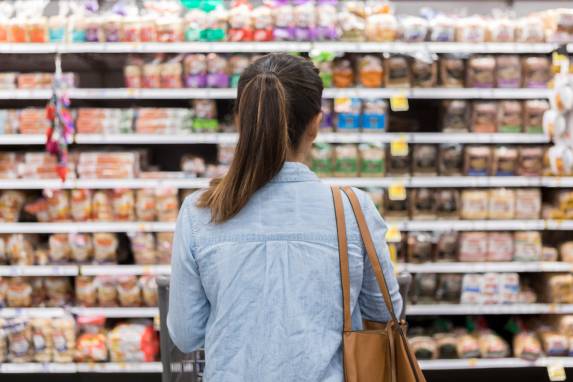
Measuring the shelf life of a product
2014/01/08 6:07 pm
If you have ever pulled food out of the pantry, and then been disappointed by its odd smell or color, then you understand what shelf life is. That food, which probably looked delicious when it was bought, has been transformed into something completely uneatable. Over time, lots of influences can start to affect products that were once perfectly fine. The packaging of those products plays a huge role in how long they are able to stay fresh. The packaging must take into account the different influences that affect different products.
Shelf life can be defined as the length of time that foods, beverages, pharmaceutical drugs, chemicals, and many other perishable items are given before they are considered unsuitable for sale, use, or consumption. Permeation greatly influences the shelf life of these products as the loss or gain of oxygen, water vapor, carbon dioxide, odors and aromas can rob the product of flavor, color, texture, taste, and nutrition. Oxygen, for example, causes adverse reactions in many different types of food. By measuring the rate at which oxygen seeps in and out of the package material, one can begin to determine the shelf life. This will be a good indicator of the amount of time that the unopened packages will still provide useable products.
We can measure shelf life by looking at the oxygen transmission rate, as well the moisture vapor transmission rate of different types of packaging. The oxygen transmission rate measures the amount of oxygen gas that passes through a substance over time. The moisture vapor transmission rate measures the passage of water vapor through a substance. This must be controlled in order to achieve the quality and safety of a product. Both measurements test the functionality of packaging. If too much, or not enough oxygen gas and moisture permeate through the packaging, the product will not be properly sustained., and may even effect the health of consumers. The goal for functional packaging is to allow air and moisture to migrate through the walls of the film, based on the specific needs of the products inside. Dry products should remain dry, and moist products should remain moist.
It is important to understand that these rates are not the same for all types of packaging. Linear Low Density Polyethylene and Low Density Polyethylene generally have a higher OTR and MVTR than High Density Polyethylene and Poly Propylene, which gives them higher permeation of oxygen gas and water vapor. LLDPE and LDPE are types of films that may be used in the packaging of hardware, automotive parts, frozen food, craft items, medical devices, electronic components, and other retail applications. The high level of permeation is not going to have major effects on the products in these types of packaging. HDPE and PP, on the other hand, may be used in medical instruments, food, sporting goods and other applications where chemical additives may react with the product inside.
This gives basic insight into the functional side of packaging. While areas such as design and marketing are important in the development of packaging materials, permeation measurement is crucial to creating a functional, cost-effective package that meets the product’s shelf life. If you want to know more about this process, or have any questions regarding the types of packaging that will best suit your needs, just give us a call at Great American Packaging. Our friendly sales team would be happy to assist you with any questions you might have.
The post Measuring the shelf life of a product appeared first on Custom Poly Bags & Plastic Bags Wholesale | Great American Packaging.
RECENT POSTS
- Quality Printing: Your Brand’s Most Important Advocate
- EPR PACKAGING LEGISLATION: IF YOU ARE A BRAND OWNER, YOU WILL BE AFFECTED
- WEBINAR | EPR LEGISLATION: WHAT BRAND OWNERS AND MANUFACTURERS NEED TO KNOW
- GREAT AMERICAN PACKAGING WELCOMES MARK MCANLIS AS VP OF SALES
- 5 Packaging Tips that Will Increase Your ROI

